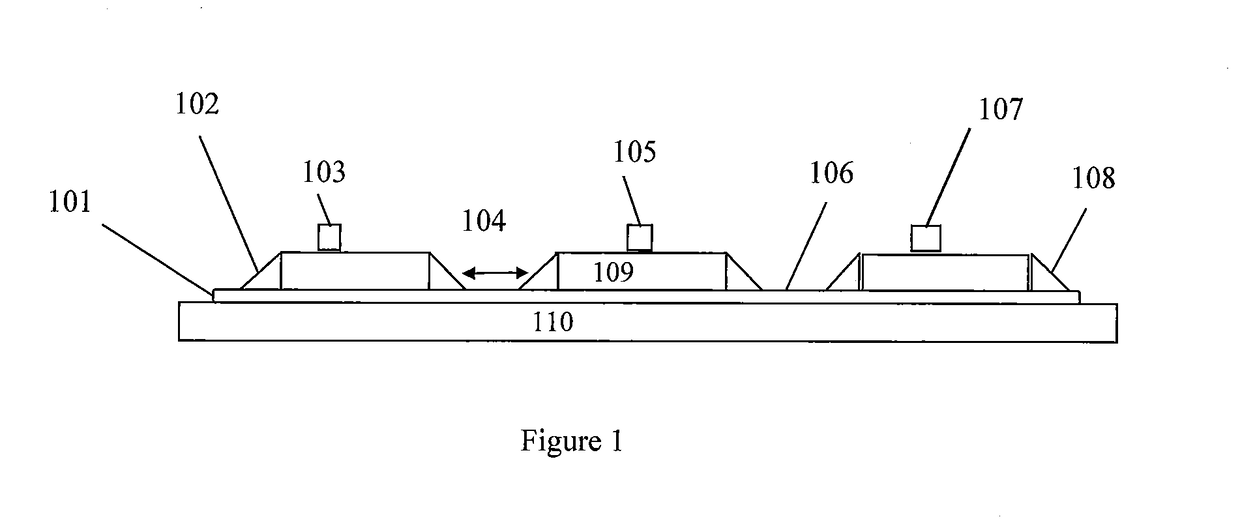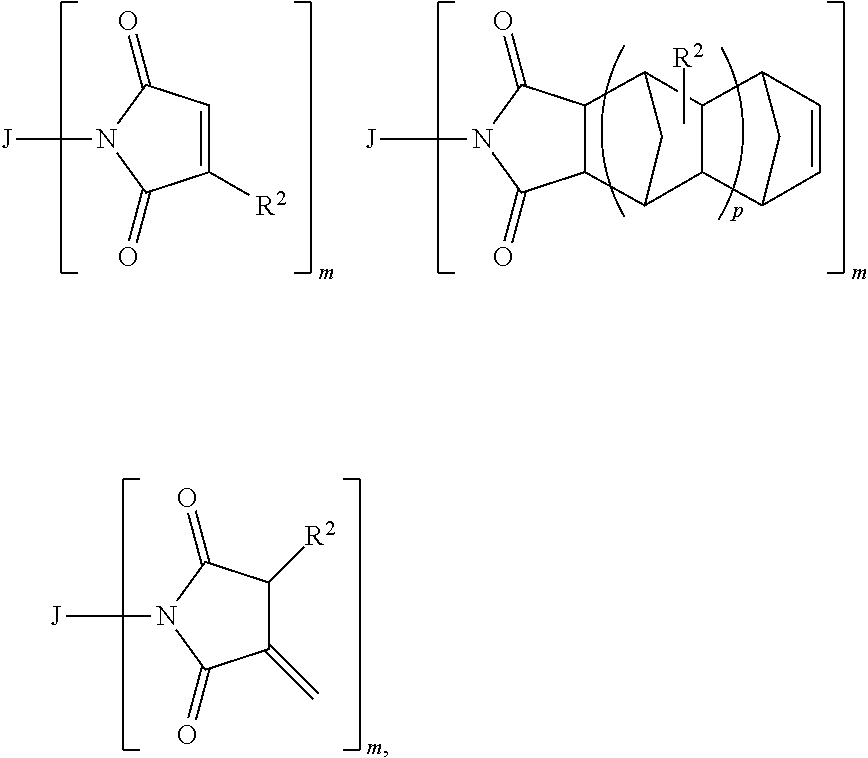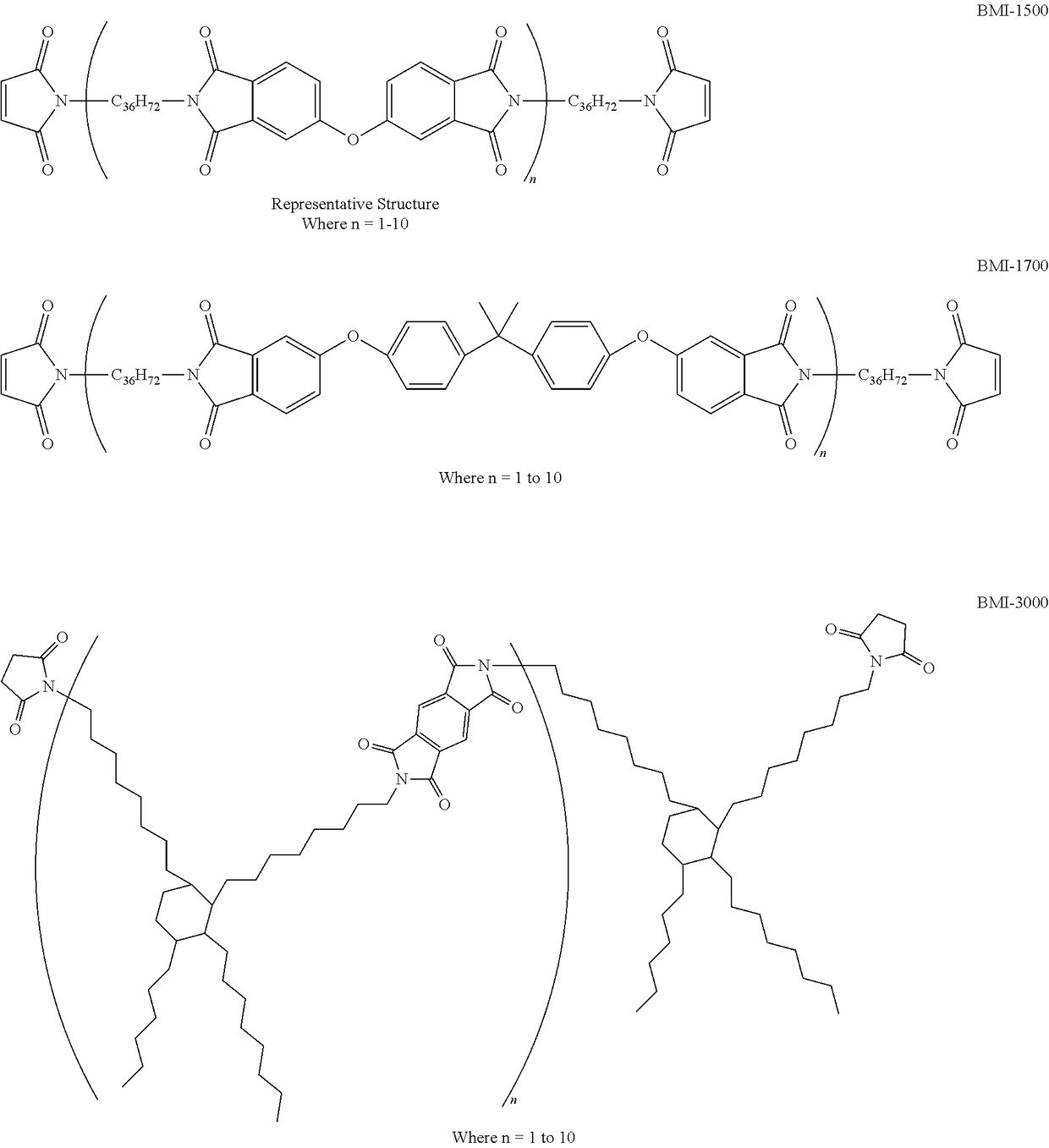Debondable adhesives and the high temperature use thereof
a temporary adhesive and high temperature technology, applied in the direction of adhesive types, lamination, amide/imide polymer adhesives, etc., can solve the problems of insufficient thermal stability of most current available temporary adhesives, the flexibility of very thin substrates is too fragile to be handled freestanding in downstream manufacturing conditions,
- Summary
- Abstract
- Description
- Claims
- Application Information
AI Technical Summary
Benefits of technology
Problems solved by technology
Method used
Image
Examples
example 1
General Procedure for Synthesis of Bismaleimides
[0204]A 1 L 3 necked flask equipped with a condenser and magnetic stir bar was charged with 4,4′-isopropylidenebis(2-phenoxyethanol) (73.6 g, 232 mmoles), 6-maleimidocaproic acid (103.2 g, 488 mmol), methyl hydroquinone (400 mg) in toluene (500 mL). PTSA (2.2 g, 11 mmol) was added and the resulting mixture refluxed with azeotropic collection of water. After about 8 h when the water collection stopped, the reaction was stopped. After cooling to room temperature, 400 mL of ethyl acetate was added and the organic layer was filtered off, washed twice with aqueous NaHCO3 solution and twice with water. After drying over anhydrous Na2SO4, the mixture was filtered. 300 ppm of methylhydroquinone was added and the solvent evaporated to give corresponding bismaleimide (135 g, 76%):
[0205]Other bismaleimides were made similarly starting from appropriate starting materials.
example 2
[0206]Two preferred properties for debondable adhesives according to the present invention are that they are stable and maintain their integrity at temperatures at 300° C. and above, to as high as 440° C., and that they easily and cleanly debond at ambient temperature. In the following examples, visual evidence of fine line cracking at high temperature indicates instability, and evidence of peel strength higher than 5N / 25 mm indicates that the adhesive can not be cleanly removed.
[0207]The test vehicle was an assembly of two glass slides 5 cm×7.5 cm, from VWR International with the adhesive composition deposed between the two slides. The bondline thickness for all samples, unless otherwise stated, was 0.125 mm. The assemblies were placed on a 150° C. Cole Parmer Digital hotplate for 30 minutes in air to harden the adhesive.
[0208]To test high temperature stability, a Thermo Scientific BF5800 Furnace was used to heat the assemblies to determined temperatures. When visual inspection of ...
PUM
| Property | Measurement | Unit |
|---|---|---|
| temperature | aaaaa | aaaaa |
| wt % | aaaaa | aaaaa |
| wt % | aaaaa | aaaaa |
Abstract
Description
Claims
Application Information
 Login to View More
Login to View More - R&D
- Intellectual Property
- Life Sciences
- Materials
- Tech Scout
- Unparalleled Data Quality
- Higher Quality Content
- 60% Fewer Hallucinations
Browse by: Latest US Patents, China's latest patents, Technical Efficacy Thesaurus, Application Domain, Technology Topic, Popular Technical Reports.
© 2025 PatSnap. All rights reserved.Legal|Privacy policy|Modern Slavery Act Transparency Statement|Sitemap|About US| Contact US: help@patsnap.com



